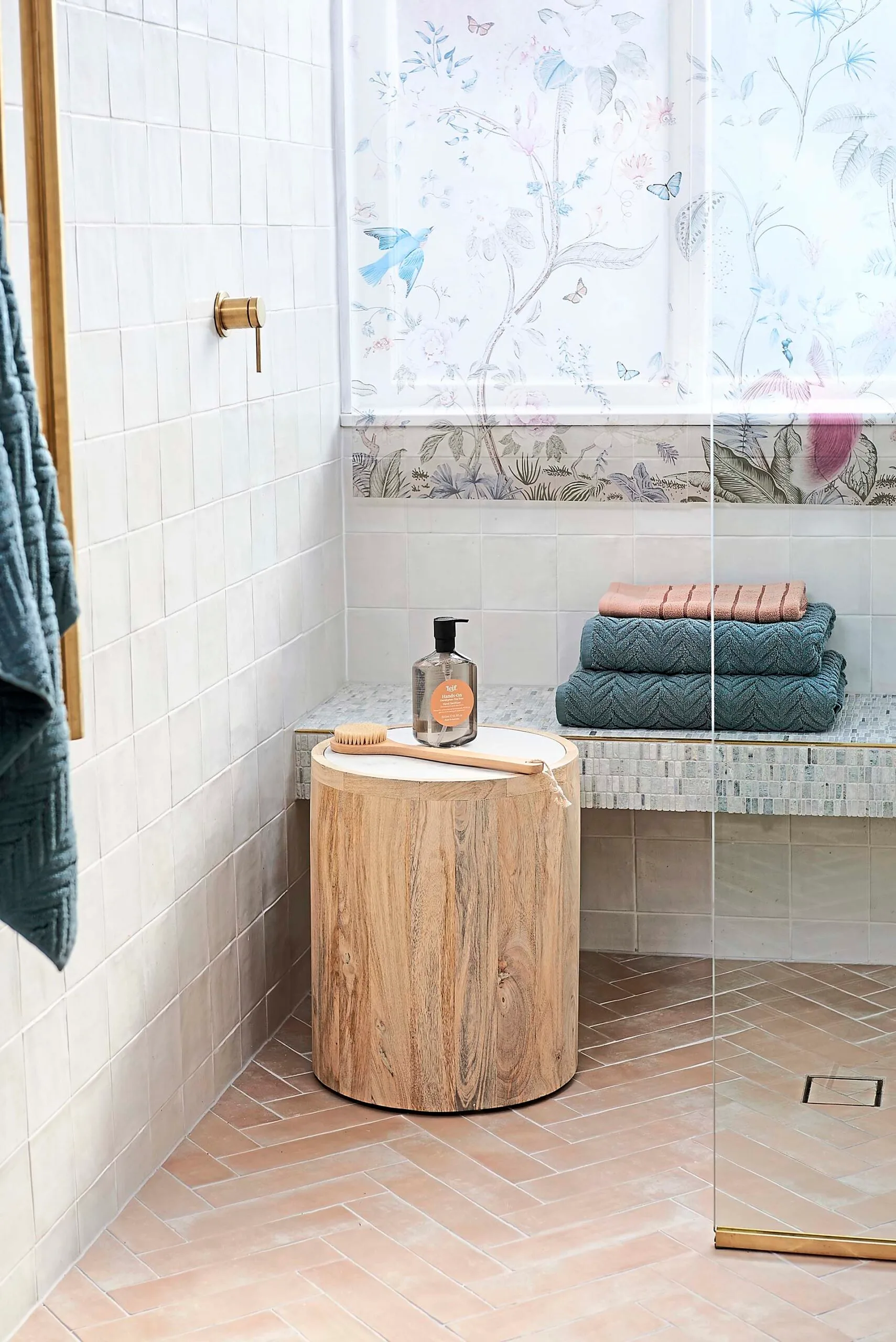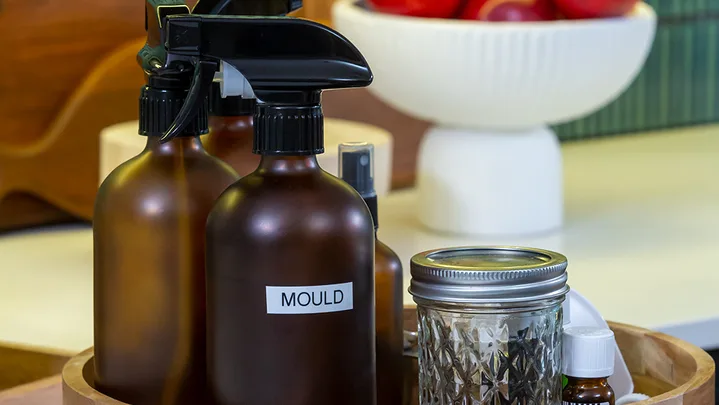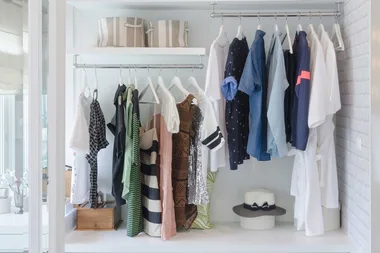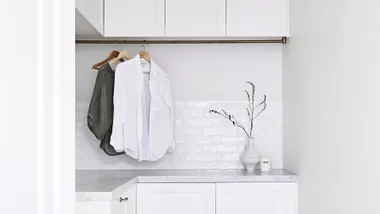If you’ve found mould growing in your home – whether it be in the bathroom, in the wardrobe or somewhere totally unexpected – it can be tempting to reach for the harshest possible cleaning products to get the situation under control. But did you know natural mould removers can be just as effective at killing mould spores as commercial products?
Microbiology professor Dee Carter of the University of Sydney says the most important aspect of getting rid of mould is to check for sources of excessive moisture. “Mould could be growing in a wall or ceiling cavity if there has been a leak or ingress of water,” she says. If the area you live in is experiencing temporarily high levels of humidity, this could also cause mould growth in the short term, and dehumidifiers may help in this scenario.
Want to tackle the mould in your home naturally? Here are three effective natural mould removers to try.

1. Undiluted white vinegar
White vinegar is said to kill around 82 percent of mould colonies. It’s a natural, non-toxic product and is colourless, meaning it won’t stain grout, clothing or carpet. Vinegar is best for small amounts of mould. Just pop some straight vinegar into a spray bottle, spray, leave for an hour, wipe off with warm water. Note: Vinegar will kill mould and its spores, but it may not remove mould stains. This is where a hydrogen peroxide cleaning solution could come in handy.
2. Tea tree oil or clove oil and water
This combination is usually the most effective method of naturally removing mould. Add 15 drops of your chosen oil into a spray bottle – prefer oil of cloves to all the others. Spray onto mouldy areas and leave for two hours, spray a bit more, wipe away.

3. Vodka
And now for something completely different, did you know vodka is great for cleaning? The cheaper the better. Pop some straight vodka into your nifty spray bottle. Spray, leave for an hour, wipe off with warm water.
Which is more effective at killing mould, bleach or vinegar?
Chlorine bleach and vinegar both have the ability to kill mould, but they have different properties and abilities.
Bleach
Writing for The Conversation, educator and Healthy Homes certifier, Katherine Allen, says bleach is effective on non-porous surfaces such as tiles or porcelain. It’s less effective on porous surfaces, such as plasterboard, fabric or grout. “On those surfaces, bleach can actually encourage more mould growth,” she says.
Bleach is also inconvenient to use. It has a strong smell, lets off toxic fumes and can cause discolouration to the surface you’re cleaning.
Vinegar
Vinegar, on the other hand, is cheap to buy, non-toxic and effective at killing mould spores on most surfaces without causing damage or discolouration. The thing to remember about vinegar is that it will kill mould but won’t remove the black stains left behind. Once the vinegar has had time to do its thing, wipe the surface clean with soapy water.
Never use bleach and vinegar together, as this may result in the creation of toxic fumes.

How do you get rid of black mould on walls permanently?
Professor Dee Carter says the most important thing you can do to get rid of mould on walls permanently is to treat it at the source. According to NSW Health, the most common sources of mould growth in homes include: poor ventilation, indoor humidity, moisture and dampness from leaks, plumbing problems, water egress and rising damp. Dee says, “If you have significant mould growth due to a leak or excessive condensation, then it may be necessary to get professional help to remedy it.”
How to prevent mould growing in your home
The best goal you can have is to try and prevent mould and mildew from growing in the first place. You can achieve this by:
- Ensuring your home and particularly water sourced rooms have adequate ventilation.
- Bring sunshine into your home at every opportunity. Open the blinds, the windows and doors.
- Direct water away from your home (check for leaks and water flow during heavy rainfall). Look for opportunities to install drainage.
- Dry wet areas immediately.
- Ensure drainage is kept free-flowing – gutters, pipes and trenches. Look for leaf litter that might be clogging things up.
- Clean indoor plants regularly by dusting the leaves and making sure puddles of water are cleared up.
- Introduce mould-resistant products into your home (treated paints and building materials, non-organic fabrics).
- Air your home well after periods of rainfall or humid days. Be aware these are times mould breeds worse.
- Wipe condensation build-up from windows and walls after humid or wet days.
- Spray fabrics regularly with a mix of 3 drops Oil of Cloves in 5 cups water and leave to dry completely.
- Spray surfaces regularly with a disinfectant, antibacterial spray.



